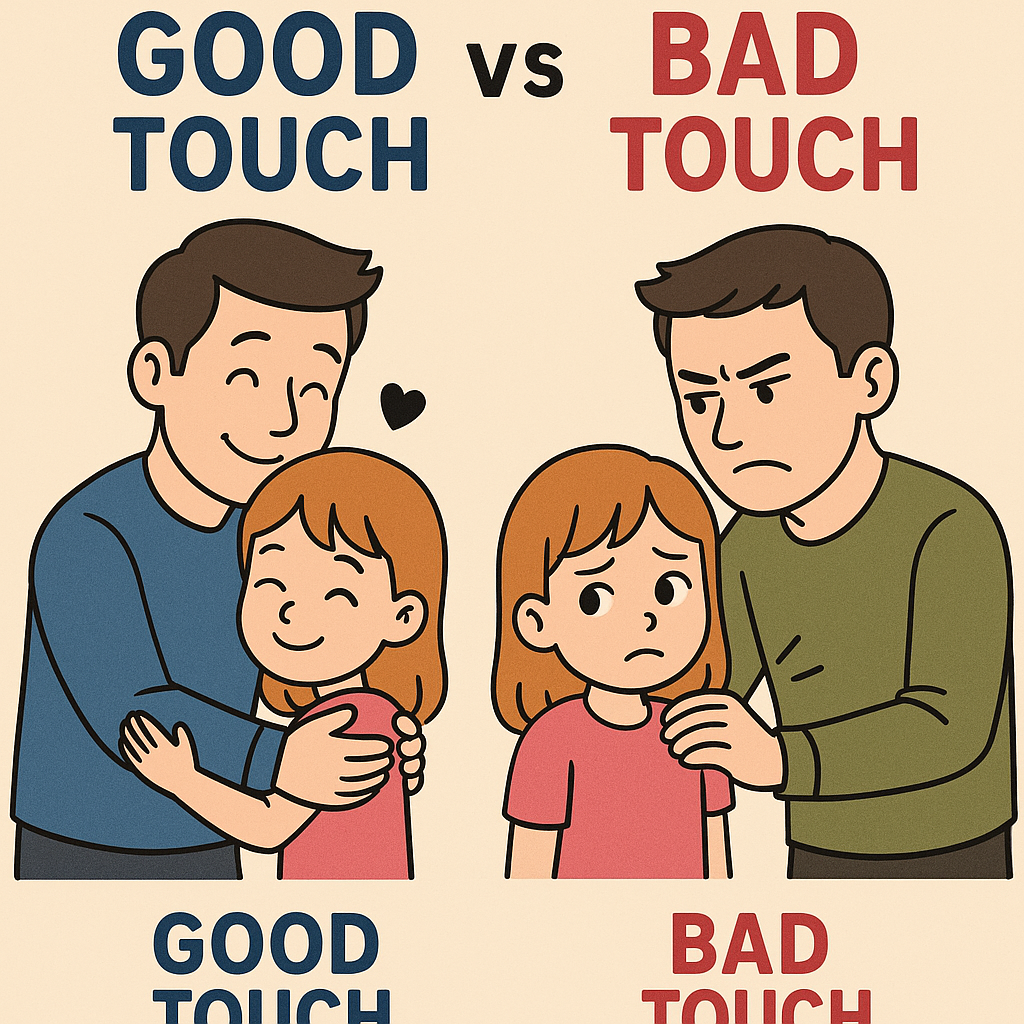
As children begin to explore the world around them, it’s essential to equip them with the knowledge and confidence to protect themselves. One of the most critical lessons in early childhood is teaching the difference between good touch and bad touch. While it may feel uncomfortable to talk about, these conversations lay the foundation for a child’s safety and self-awareness.
1. Start with Body Ownership:
Begin by teaching your child that their body belongs to them. Use simple, clear language like:
“You have the right to say NO if someone touches you in a way that makes you uncomfortable.”
Teach them the correct names for body parts, including private parts. This helps remove shame and confusion and ensures they can communicate clearly if something inappropriate happens.
2. Define Good Touch and Bad Touch
Bad Touch: Any touch that makes them feel scared, hurt, uncomfortable, or confused — especially in private areas covered by underwear.
You can also mention “confusing touch” — touches that aren’t clearly good or bad but still make them feel uneasy. Teach them to trust their feelings.
3. Use Storytelling and Role Play
Children learn best through play. Use dolls, puppets, or stories to demonstrate situations:
Practice what they should say and do in those situations.
This builds confidence and helps children remember what to do if something feels wrong.
4. Establish the No Secrets Rule
Teach children that they should never keep secrets about touches or anything that makes them feel bad. Instead, encourage open conversations by saying:
“Even if someone says it’s a secret, you should tell me.”
This builds confidence and helps children remember what to do if something feels wrong.
5. Create a Safety Circle
Help your child identify 2-3 trusted adults they can talk to if something happens — parents, teachers, relatives. Make sure they know it’s okay to keep telling someone until they are believed.
5. Be Calm, Clear, and Consistent
It’s important to have these talks regularly, not just once. Keep the tone calm and reassuring. Avoid scary language — the goal is to empower, not frighten.
Use books like “Your Body Belongs to You” by Cornelia Spelman or “I Said No!” by Kimberly King to support the conversation.
Teaching children about good touch and bad touch is a crucial part of early education and safety. When we approach this topic with empathy, clarity, and consistency, we give children the tools they need to stay safe and speak up.
Remember — it’s not a one-time talk. It’s a series of open, age-appropriate conversations that grow with your child.